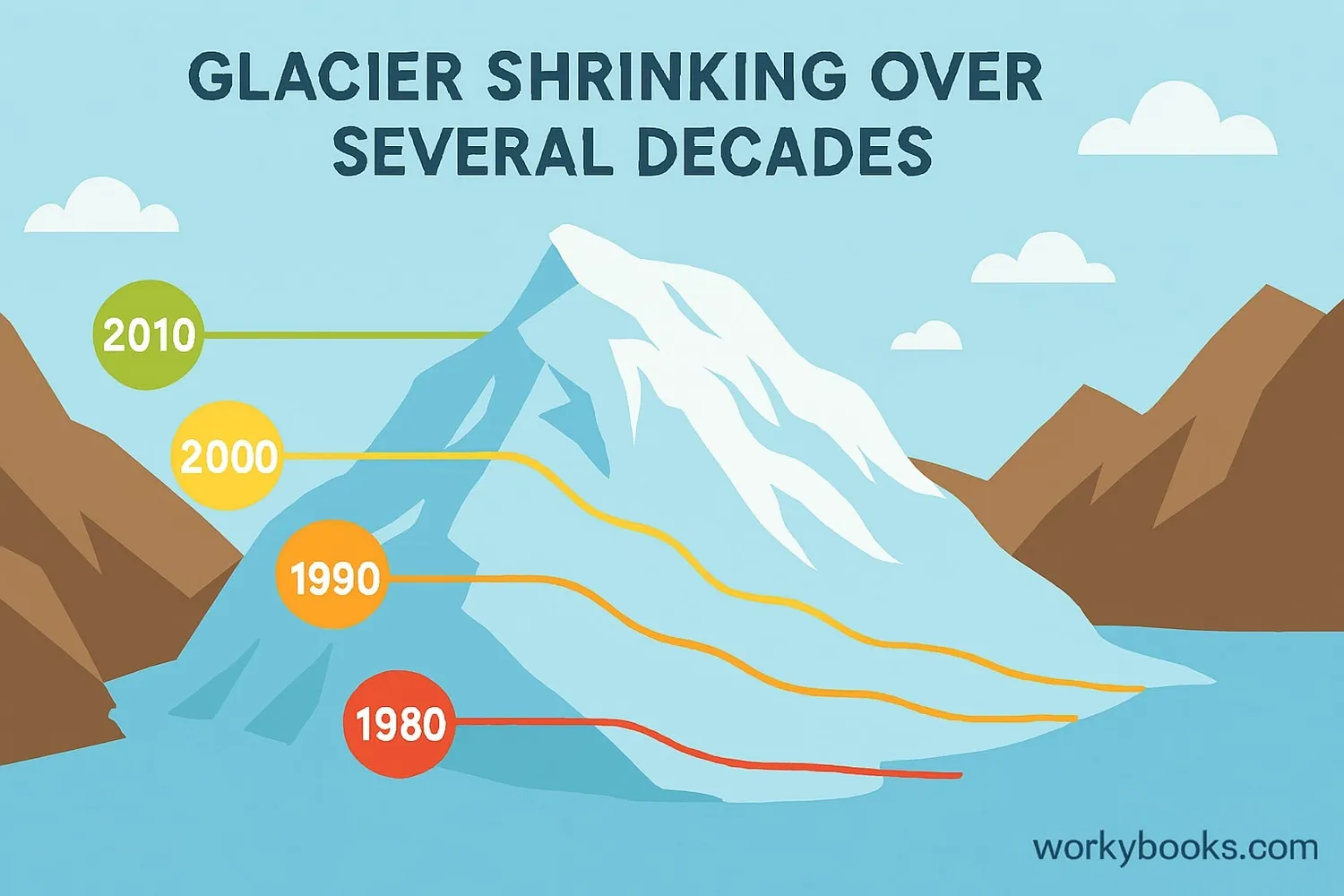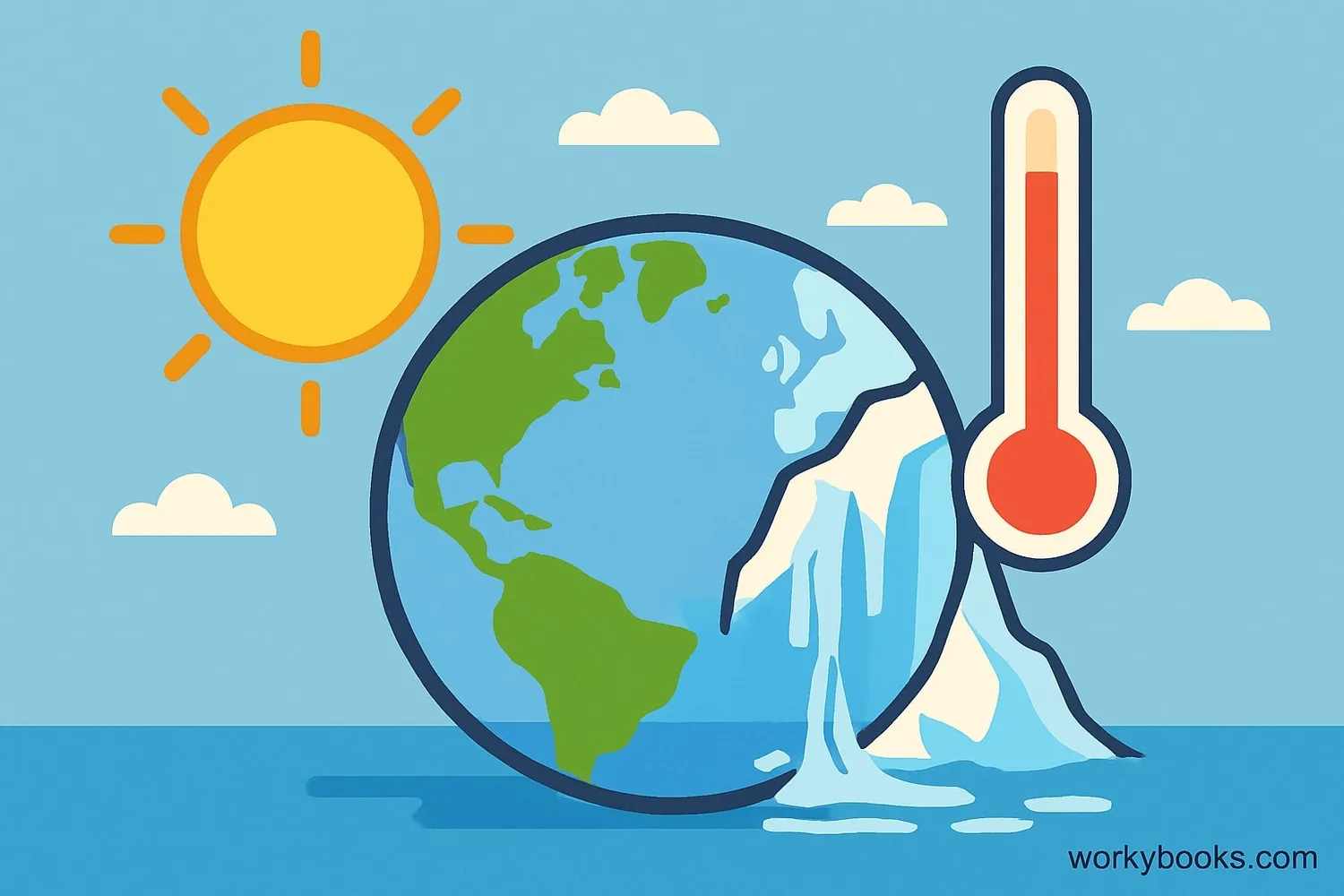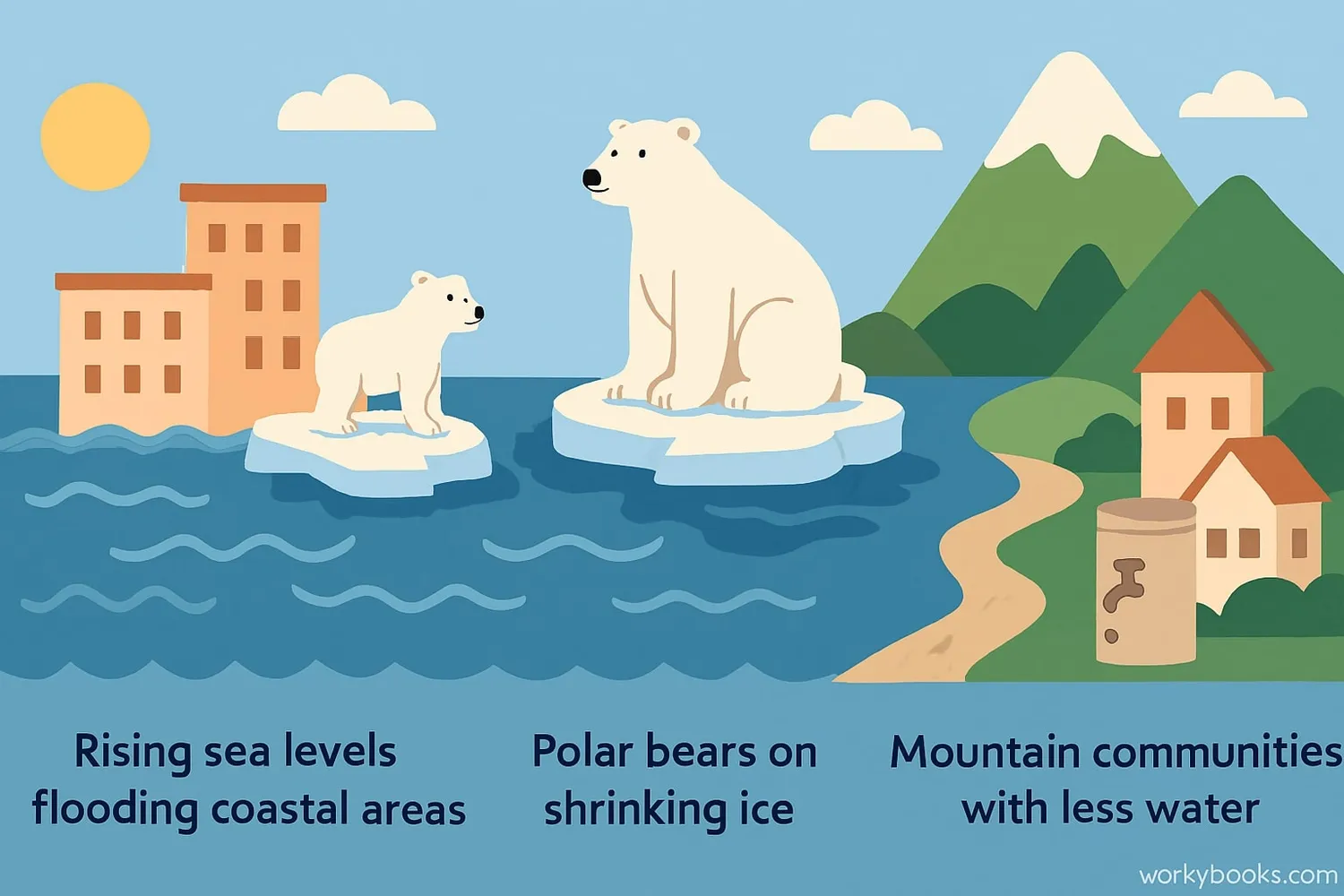Glacial Retreat - Definition, Examples, Quiz, FAQ, Trivia
Discover how Earth's glaciers are changing and why it matters
What is Glacial Retreat?

Glacial retreat is when glaciers shrink and pull back over time. Glaciers are massive rivers of ice that form when snow accumulates over many years and turns into ice. When a glacier retreats, it's not actually moving backward - it's melting faster at its edges than new ice can form.
Think of a glacier like a giant ice cube that's constantly being added to at the top (from snowfall) and melting at the bottom. When it melts faster than new ice forms, the entire glacier gets smaller - that's glacial retreat!
Glacier Fact!
Glaciers store about 69% of the world's fresh water - that's why their melting affects water supplies everywhere!
Causes of Glacial Retreat

The main cause of glacial retreat is climate change and global warming. Here's how it works:
Greenhouse Gases
Human activities release gases that trap heat in our atmosphere
Rising Temperatures
Earth's average temperature increases
Melting Accelerates
Glaciers melt faster than new ice can form
Retreat Begins
The glacier shrinks and pulls back from its previous position
Other factors can contribute to glacial retreat:
• Less snowfall in winter
• Warmer ocean temperatures melting ice shelves
• Dark particles (like pollution) on ice that absorb more heat
• Changes in weather patterns
Temperature Fact!
Glaciers are melting twice as fast now as they did in the 1990s. Some glaciers could disappear completely in our lifetime!
Effects of Glacial Retreat

Glacial retreat affects our planet in many important ways:
Sea Level Rise
Melting glaciers add water to oceans, causing sea levels to rise and coastal flooding
Water Supply
Millions depend on glacier meltwater for drinking and farming
Ecosystem Changes
Animals like polar bears and penguins lose their habitats
Other important effects include:
• Increased risk of glacial lake floods
• Changes to ocean currents that regulate climate
• Loss of reflective ice surfaces that help cool Earth
• Impact on tourism and local economies
Understanding glacial retreat helps us prepare for these changes and work toward solutions.
Glacial Retreat Quiz
Test your knowledge about glacial retreat with this quiz! Answer all 5 questions to see how much you've learned.
Frequently Asked Questions
Here are answers to common questions about glacial retreat:
Cool Glacial Facts
Discover fascinating information about glaciers and their retreat:
Ice Giants
The largest glacier on Earth is Lambert Glacier in Antarctica. It's about 400 km long, 100 km wide, and 2.5 km deep - that's taller than 10 Empire State Buildings stacked!
Ancient Ice
Some Antarctic ice is over 1 million years old! Scientists drill ice cores to study ancient climate patterns trapped in the ice like a time capsule.
Moving Mountains
Glaciers may look still, but they're always moving! Some flow several meters per day. The fastest recorded glacier moved 20 meters in just 90 minutes!
Water Towers
Himalayan glaciers provide water for nearly 2 billion people! They're often called the "Third Pole" because they hold the most ice outside the polar regions.





